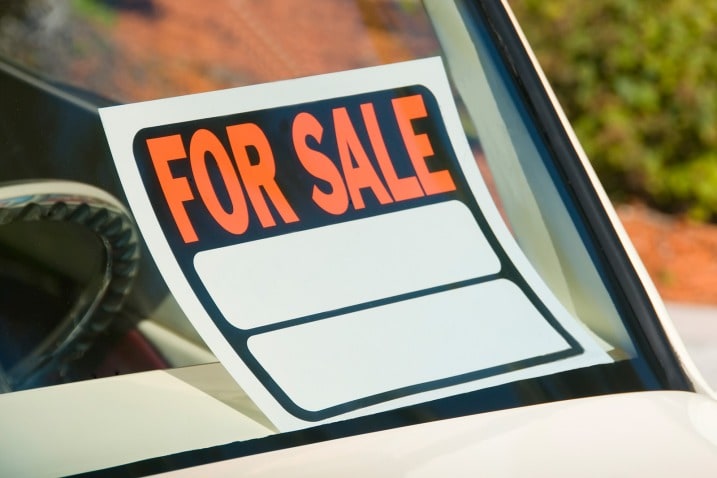1. Consider the market. Is your car in demand? Can you ask for top dollar? Is this the right time to sell it? Here are a few general rules to help you answer these questions.
- Family sedans, while boring to many car enthusiasts, are in constant demand by people who need basic, inexpensive transportation.
- Getting a good price for a convertible or sports car depends on the season in which you sell it. Sunny, summerlike weather brings out the buyers. If you sell in the fall and winter, prepare for the process to take longer.
- Trucks and vans, which people often use for work, sell quickly and command competitive prices. Don't underestimate their value.
- Collector cars take longer to sell and are tricky to price. However, these cars can bring good sale prices — if you find the right buyer.
Take into account any other market conditions that might have an impact on your car. For example, if your car gets good fuel economy and gas prices are high, you will be able to ask more for it than when gas is cheap. Similarly, selling a supersize SUV for top dollar is going to be tough if gas prices are sky high.
2. Check the Pricing Guides. Use Edmunds.com True Market Value (TMV®) pricing to determine the fair value of your car. TMV prices are adjusted for mileage, color, options, condition and even region of the country. Keep in mind that TMV is a transaction price — not an asking price. It's where you want to wind up after negotiations. And don't forget to take a look at other pricing guides for comparison sake.
3. Survey your competition. Review classified ads on such Web sites as Auto Trader, Craigslist and eBay Motors to see the asking prices for other cars like yours. Most sites offer advanced searches to find close matches to your vehicle. But keep in mind that these are asking prices, not selling prices, and might just be wishful thinking by the seller. Compare the cars' condition, mileage, geographic location and asking price to your vehicle to guide you in setting the right price.
4. Price your car competitively. As mentioned earlier, be sure to leave wiggle room for negotiations. Ask for slightly more money than you expect. If you get your asking price, that's great. But if you have to go lower, it won't be a terrible loss.
Also consider the psychological aspects of car pricing by staying just below benchmark numbers such as $10,000 (price it at $9,900) or $20,000 (price it at $19,900). Car dealers take this philosophy to an extreme by listing everything on their lots with a price that ends in "999" ($12,999, for example; apparently, we shoppers are not supposed to notice that the car basically costs $13,000). Still, this tactic demonstrates the psychology of setting prices. A product that doesn't sell well at $20 might jump off the shelf at $19.95.
As a private-party seller, however, you don't want to look like a car dealer. Therefore, you might want to take a simplified approach and set your price at round figures such as $12,750 or $12,500.
5. Tap your intuition. Once you have considered all the hard data, it's time to consult your intuition. Perhaps you have a hunch that your car is desirable, or that the time is right for you to ask a certain price. As you do this gut check, remember that it's always a good idea to err on the side of a higher asking price. If necessary, you can lower the price until you get callers. On the other hand, if you err on the low side, you'll sell it quickly but won't get the car's full value.

